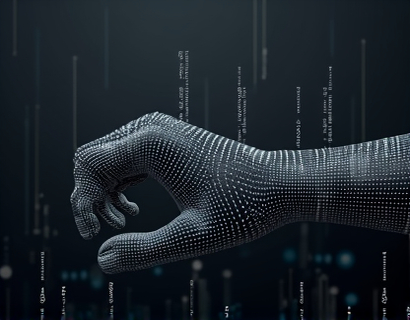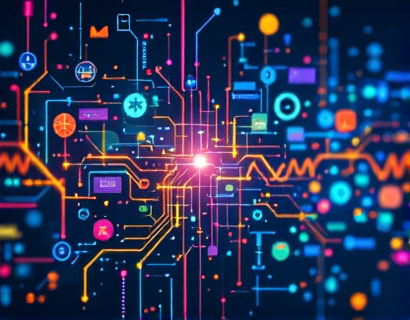AI-Driven Insights in Robotics: A Child-Friendly Journey for Enthusiasts and Educators
The field of robotics has evolved dramatically over the past few decades, transforming from a niche area of research into a cornerstone of modern technology. With advancements in artificial intelligence, robotics has found applications in various sectors, including manufacturing, healthcare, education, and entertainment. This article aims to provide a comprehensive yet accessible overview of the latest trends and insights in AI-driven robotics, tailored for a diverse audience that includes robotics enthusiasts, educators, students, parents, and tech professionals. By leveraging AI chat technology, we ensure that the content is not only accurate and up-to-date but also child-friendly, making it an invaluable resource for learning and exploration.
Understanding AI in Robotics
Artificial Intelligence (AI) plays a pivotal role in the development and functionality of robots. AI enables robots to perceive their environment, make decisions, and perform tasks autonomously. The integration of AI in robotics involves several key components, including machine learning, computer vision, natural language processing, and predictive analytics. Machine learning algorithms allow robots to learn from data, improving their performance over time without being explicitly programmed. Computer vision enables robots to interpret and understand visual information, crucial for tasks like object recognition and navigation. Natural language processing allows robots to communicate with humans in a more natural and intuitive way, while predictive analytics helps robots anticipate and adapt to changing conditions.
Current Trends in Robotics
The robotics industry is witnessing several exciting trends that are shaping its future. One of the most significant trends is the miniaturization of robotic components, making it possible to create smaller, more agile robots for various applications. This trend is particularly beneficial in fields like healthcare, where miniature robots can be used for precise surgical procedures or targeted drug delivery. Another trend is the increasing use of collaborative robots, or cobots, designed to work alongside humans in shared workspaces. Cobots enhance productivity and safety in manufacturing and assembly lines by handling repetitive or dangerous tasks.
Autonomous systems are also gaining traction, with self-driving cars and drones leading the way. These systems rely on advanced AI algorithms to navigate complex environments and make real-time decisions. In the realm of service robotics, robots are being developed to assist in domestic settings, providing companionship and support to the elderly or individuals with disabilities. The integration of AI in these robots enables them to understand and respond to human emotions and needs, enhancing the user experience.
Educational Opportunities in Robotics
Robotics offers a wealth of educational opportunities for students of all ages. It serves as an excellent platform for learning STEM (Science, Technology, Engineering, and Mathematics) concepts in an engaging and hands-on manner. For young students, robotics kits and educational robots like LEGO Mindstorms or Dash and Dot provide a fun introduction to programming and mechanical engineering. These tools allow children to build and program their own robots, fostering creativity, problem-solving skills, and critical thinking.
For older students and educators, more advanced robotics platforms such as Arduino and Raspberry Pi offer deeper insights into electronics, software development, and AI. These platforms support projects ranging from simple automations to complex AI-driven applications. Educational institutions can incorporate robotics into their curricula to prepare students for future careers in tech and engineering. Workshops, competitions, and hackathons further enrich the learning experience by encouraging collaboration and innovation.
AI Chat Technology for Robotics Education
To make robotics education more accessible and interactive, AI chat technology has emerged as a powerful tool. An AI chat interface, designed to be user-friendly and safe for children, can provide personalized learning experiences. This chat interface, which we will refer to as an AI educational assistant, can answer questions, provide explanations, and guide users through robotics concepts and projects. By interacting with the chat, students can receive immediate feedback and guidance, enhancing their understanding and confidence.
The AI educational assistant can be integrated into various learning environments, including classrooms, after-school programs, and home education. It can adapt to different learning styles and paces, offering content in a way that is both engaging and educational. For example, a student asking about how a robot's sensors work can receive a detailed explanation along with visual aids and practical examples. The chat can also suggest related projects or resources for further exploration.
Verified and Safe Content for Children
Ensuring the accuracy and safety of content is paramount when educating children. The AI educational assistant is designed with robust content verification processes to guarantee that the information provided is reliable and up-to-date. This involves cross-referencing data from trusted sources, such as academic journals, industry reports, and official educational resources. The chat is also programmed to avoid complex jargon and technical terms that might be confusing for young learners, using language that is clear and easy to understand.
Safety is another critical aspect. The chat is designed to filter out inappropriate content and ensure that interactions remain positive and educational. It can monitor and respond to user inputs in a manner that promotes a safe and supportive learning environment. Parents and educators can rest assured that the AI educational assistant aligns with educational standards and values, providing a valuable supplement to traditional learning methods.
Engaging a Diverse Audience
The robotics community is diverse, encompassing enthusiasts, educators, students, parents, and tech professionals. Each group has unique needs and interests, but all can benefit from accessible and reliable information. For robotics enthusiasts, the AI educational assistant can delve into advanced topics like robotics architecture, sensor fusion, and AI algorithms. It can provide insights into the latest research and developments, helping enthusiasts stay at the forefront of the field.
Educators can leverage the chat to find lesson plans, teaching strategies, and resources that align with curriculum standards. The chat can offer suggestions for integrating robotics into different subjects, such as using robots to teach physics concepts or programming in math classes. For parents, the AI educational assistant can provide guidance on supporting their children's interest in robotics, recommending age-appropriate kits and activities.
Tech professionals can use the chat to explore specialized topics, network with peers, and stay informed about industry trends and job opportunities. The chat can also serve as a platform for discussing ethical considerations, such as the impact of automation on employment and the importance of responsible AI development.
Interactive Learning Experiences
To make robotics education more engaging, the AI educational assistant can facilitate interactive learning experiences. For instance, it can guide users through step-by-step tutorials for building and programming robots, providing real-time feedback and troubleshooting tips. Interactive quizzes and challenges can test users' knowledge and reinforce learning. The chat can also connect users with online communities and forums, fostering a sense of belonging and collaboration among robotics enthusiasts.
Virtual and augmented reality (VR/AR) technologies can further enhance the learning experience. The AI educational assistant can integrate VR/AR applications to create immersive simulations where users can design, build, and test robots in a virtual environment. This not only makes learning more fun but also allows users to experiment with complex concepts in a risk-free setting.
Future Prospects and Challenges
The future of AI-driven robotics is promising, with ongoing research and development pushing the boundaries of what robots can do. One of the key areas of focus is the development of more sophisticated AI algorithms that enable robots to perform tasks that require human-like intelligence, such as emotional recognition and complex decision-making. The integration of 5G and edge computing will further enhance the capabilities of robots, allowing for faster data processing and real-time communication.
However, the rapid advancement of robotics also presents challenges. Ethical considerations, such as privacy, security, and the impact on employment, need to be addressed. There is a growing need for regulations and guidelines to ensure that robotics technologies are developed and deployed responsibly. Education plays a crucial role in preparing the workforce for these changes, equipping individuals with the skills and knowledge required to thrive in a tech-driven world.
In conclusion, AI-driven robotics offers a wealth of opportunities for learning and innovation. By providing verified, safe, and engaging content through AI chat technology, we can inspire and educate a diverse audience, from young students to seasoned professionals. The future of robotics is bright, and with the right resources and support, anyone can become a part of this exciting journey.











































